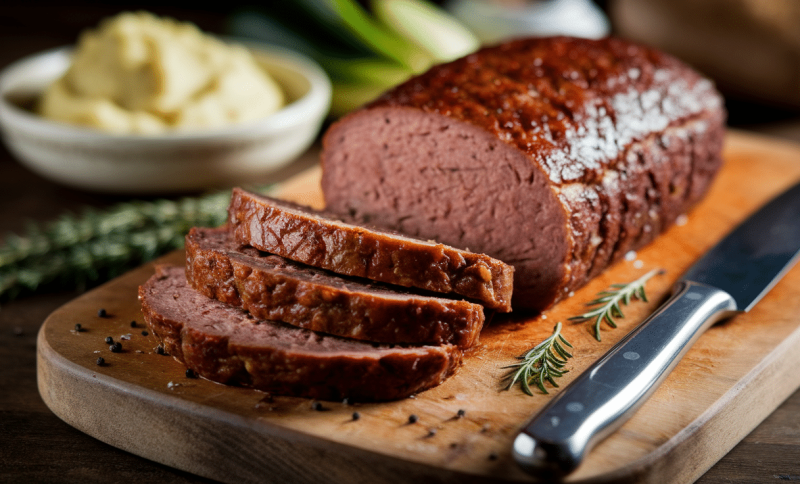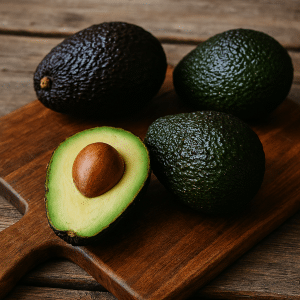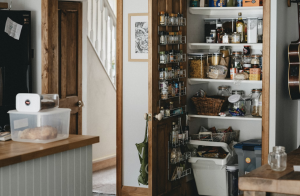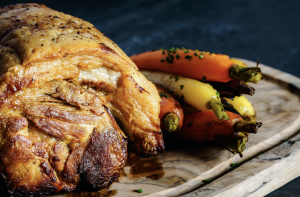Nobody thinks about sodium until their doctor tells them to. Then suddenly, every favorite recipe becomes off-limits.
Traditional meatloaf recipes can pack over 1,000mg of sodium per slice, leaving people who need to watch their salt intake feeling stuck with bland, boring meals.
But here’s the thing – cutting sodium doesn’t mean cutting flavor. This easy low low-sodium meatloaf recipe uses smart ingredient swaps and bold seasonings to create a dish that’s just as satisfying as the original.
No one at the dinner table will even notice the difference. The best part? It uses everyday ingredients and simple techniques that anyone can master.
This isn’t about complicated cooking methods or hard-to-find items. It’s about creating a classic comfort food that works for everyone, including those who are watching their sodium intake.
Why Choose a Low-Sodium Meatloaf?
Choosing a low-sodium meatloaf is a smart step for better health. Lower sodium intake helps reduce high blood pressure, supports heart health, and lessens strain on your kidneys.
It’s especially important for those managing hypertension or chronic conditions.
But flavor doesn’t have to suffer; fresh herbs, bold spices, garlic, onion, and ingredient swaps like low-sodium broth or unsalted tomato paste can bring rich, satisfying taste without relying on salt.
This meatloaf also aligns with clean eating goals and is ideal for meal prepping low-sodium dishes in advance.
If on a heart-healthy diet or simply trying to reduce your sodium intake, low-sodium meatloaf delivers comfort and nutrition with every bite.
Ingredients You’ll NeedFor the Low Sodium Meatloaf:
Optional Toppings:
|
Recipe Notes
| Prep Time | 15 minutes |
| Cook Time | 1 hour |
| Category | Dinner / Main Course |
| Method | Baked |
| Cuisine | American (Low Sodium) |
| Yield | 6–8 servings |
Let’s Make the Meatloaf: Step-by-Step Instructions
Follow these easy steps to make your low-sodium meatloaf flavorful, moist, and heart-healthy. You’ll bake it to perfection while keeping sodium in check.
Step 1: Prep the Oven and Pan

Begin by getting your oven and workspace ready for a smooth cooking experience. Preheat the oven to 375°F and line a baking sheet or loaf pan with parchment paper or lightly grease it with olive oil.
Set out all the ingredients to streamline the mixing process.
Pro Tip: A sheet pan allows air to circulate more effectively, helping to create a delicious crust on your loaf.
Step 2: Combine Ingredients in a Bowl

Mix all the ingredients thoroughly, but avoid overworking the meat. In a large bowl, add ground meat, grated carrot, garlic, onion, breadcrumbs or quinoa, egg, herbs, and citrus juices.
Season with cumin, oregano, paprika, pepper, and minimal or no salt, then gently mix by hand or with a fork until evenly combined.
Pro Tip: Use a fork or your fingers to keep the texture tender and avoid dense meatloaf.
Step 3: Form the Loaf

Shape the meat mixture into a loaf before baking. Transfer the meat mixture onto the prepared pan and gently shape into a loaf about 2 inches tall. Flatten any cracks to help retain moisture during cooking.
Pro Tip: Don’t pack it too tightly—air pockets help it cook evenly and stay juicy.
Step 4: Bake and Baste (If Using Topping)

Get ready to roast your loaf low and slow for optimal flavor. Place the loaf in the oven and bake for 45 minutes, then if desired, brush the top with a salt-free glaze or tomato paste.
Continue baking for 15 more minutes until fully cooked through.
Pro Tip: Basting with a light citrus-based glaze in the last 10 minutes adds shine and tang.
Step 5: Check Doneness and Rest

Ensure it’s fully cooked and ready to slice. Use a meat thermometer to check the center; it should reach 160°F for ground beef, then let the meatloaf rest for 10 minutes before slicing. This helps juices redistribute and keeps slices neat when serving.
Pro Tip: Tent with foil while resting to keep it warm without drying out.
Optional Low Sodium Topping Ideas

Try these flavorful low-salt toppings to enhance your meatloaf without compromising on health or taste. Many are also great for diabetic-friendly diets.
- Homemade No-Salt Ketchup Glaze
A sweet and tangy topping using sugar-free ketchup, vinegar, garlic, and a dash of paprika.
Diabetic-Friendly: Yes (use sugar-free ketchup) - Balsamic Reduction
Simmer balsamic vinegar until thickened for a naturally sweet, rich glaze.
Diabetic-Friendly: Yes - Tomato Paste with Herbs
Combine no-salt-added tomato paste with oregano, thyme, garlic, and black pepper for a savory, earthy topping.
Diabetic-Friendly: Yes - Roasted Red Pepper Purée
Blend roasted red peppers with a touch of olive oil and fresh herbs for a smoky, colorful layer.
Diabetic-Friendly: Yes - Lime and Garlic Olive Oil Drizzle
A fresh, zesty mix of lime juice, olive oil, and minced garlic that brightens every bite.
Diabetic-Friendly: Yes
These options deliver bold flavor, minimal salt, and thoughtful nutrition in every spoonful.
Tips to Maximize Flavor Without the Salt
Enhancing the flavor of a low-sodium meatloaf is all about using fresh, aromatic ingredients. Garlic, onions, parsley, thyme, and rosemary add natural depth and warmth.
For savory richness, try umami-packed additions like mushrooms, nutritional yeast, or a splash of low-sodium soy sauce, if tolerated.
Toasting your breadcrumbs before mixing them in gives a subtle nuttiness that enhances the loaf’s overall flavor.
To brighten things up, a quick splash of lemon juice or vinegar can wake up the dish without overpowering it. With these tips, you won’t even miss the salt.
Nutritional Breakdown
Here’s a rough estimate of the nutrition per serving (based on a 6–8 serving low-sodium meatloaf using lean ground meat and minimal salt), along with a comparison to traditional meatloaf values:
| Nutrient | Low Sodium Meatloaf | Traditional Meatloaf |
|---|---|---|
| Calories | 280–320 kcal | 350–400 kcal |
| Protein | 22–26 g | 20–24 g |
| Sodium | 140–180 mg | 400–600+ mg |
| Total Fat | 14–18 g | 20–25 g |
| Fiber | 2–3 g | 1–2 g |
This low-sodium version significantly reduces salt while still delivering protein, flavor, and fiber, making it a healthier and heart-friendly option compared to the traditional version.
Storage & Reheating Secrets
Low-sodium meatloaf retains its flavor and texture beautifully when stored properly. Here’s how to enjoy leftovers without losing moisture or taste:
-
Refrigerate: Store leftover meatloaf in an airtight container in the fridge for up to 4 days. It stays moist and flavorful when properly sealed.
-
Freezing: For longer storage, freeze cooked slices individually in foil or freezer-safe bags. It keeps well for up to 3 months.
-
Oven Reheating: Cover slices with foil and reheat in the oven at 325°F for 15–20 minutes to warm through without drying out.
-
Microwave Hack: Place a slice on a plate, cover with a damp paper towel, and microwave at 70% power for soft, juicy results.
Serving Suggestions (Complete the Low Sodium Meal)
Make your low-sodium meatloaf dinner feel complete with these tasty, heart-friendly sides. Each one complements the flavor without adding unnecessary salt.
1. Steamed or Roasted Veggies (No Salt)

Lightly steamed or oven-roasted carrots, broccoli, or zucchini add color and crunch. Use olive oil and herbs like thyme or dill for flavor without sodium.
The natural sweetness of roasted vegetables pairs beautifully with the savory herbs in the meatloaf, creating a balanced plate that feels both satisfying and nutritious.
2. Mashed Potatoes with Garlic (Unsalted)

Creamy mashed potatoes made with garlic and unsalted butter offer cozy comfort. A splash of milk and fresh chives adds flavor without the need for salt.
The smooth, creamy texture provides the perfect contrast to the firmer meatloaf, while roasted garlic brings depth and warmth to every bite. For extra richness, try adding a dollop of Greek yogurt or cream cheese.
The potatoes also help absorb any juices from the meatloaf, making each forkful even more flavorful.
3. Brown Rice or Quinoa with Lemon Zest

Wholesome and filling, brown rice or quinoa adds fiber and balance to your meals. Finish with lemon zest and parsley for a bright, fresh kick. These whole grains provide a nutty, earthy base that complements the bold spices in the meatloaf without competing for attention.
The citrus notes help cut through the richness of the meat, while the added fiber makes the meal more filling and nutritious.
Consider cooking the grains in low-sodium vegetable broth for extra flavor depth.
4. Low-Sodium Broth-Based Soup

Start the meal with a warm veggie or lentil soup made using low-sodium broth. It’s a soothing, flavorful way to round out the plate. A light soup course helps pace the meal and adds extra vegetables to your dinner without feeling heavy.
Try a simple tomato basil soup, roasted butternut squash soup, or a hearty minestrone loaded with fresh vegetables.
The warm, comforting start prepares your palate for the main course while adding valuable nutrients and hydration to your meal.
5. Drink Pairing: Unsweetened Iced Tea or Sparkling Water

Stay refreshed with chilled herbal tea or lemon-lime sparkling water. Both pair well without the need to add sugar or salt to your meal.
Unsweetened beverages help cleanse the palate between bites, allowing you to fully appreciate the complex flavors in your low-sodium meatloaf.
Herbal teas like chamomile or mint provide a soothing complement, while sparkling water with a splash of fresh citrus adds a festive touch. These choices also help you stay hydrated without adding unnecessary calories or sodium to your healthy meal.
Conclusion
The Best Part About This Low-Sodium Meatloaf? Nobody Will Miss the Extra Salt.
This Recipe Proves that Eating Healthier Doesn’t Mean Giving up Comfort Food. The Herbs and Spices Pack Adds So Much Flavor that Guests Often Ask for Seconds Before They Even Know It’s Low Sodium.
Making this Meatloaf Becomes Second Nature After the First Try. The prep is Simple, the Ingredients are Easy to find, and the Cleanup is Minimal. Plus, Leftovers Make Perfect Sandwiches the Next Day.
Ready to Give this Recipe a Try? Drop a Comment Below and Share how it Turned Out! Check out Our Other Heart-Healthy Comfort Food Recipes for More Ideas.













